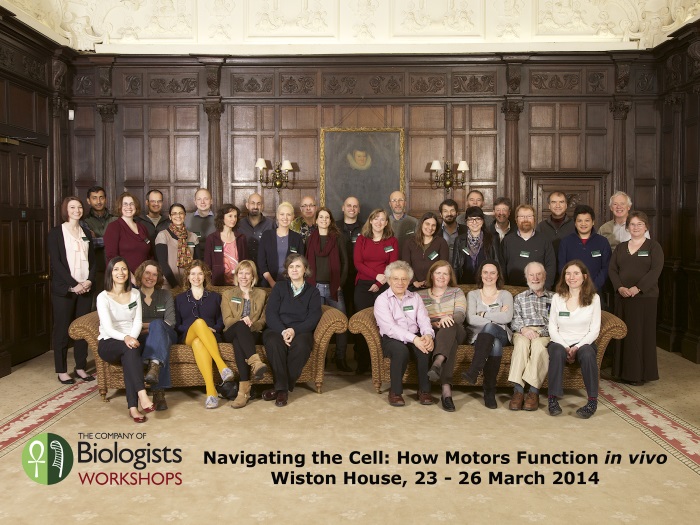Navigating the Cell: How Motors Function In Vivo
Organisers: Vladimir Gelfand and Margaret Titus
Date: 23rd – 26th March 2014
Location: Wiston House, Steyning, West Sussex, UK
Motor proteins and the cytoskeletal tracks that they use are the key components that define the organization of every eukaryotic cell. A great deal is now known about how motors utilize the energy of ATP to move along cytoskeletal tracks. The major challenge in the field is to now understand how motors function in a complex and crowded intracellular environment.
The goal of this Workshop was to bring together a group of investigators working across multiple fields of science to consider how motors operate in the real cellular context. The questions that this Workshop addressed included: what the actual forces motors may generate and what types of obstacles they experience as they move, the interactions between multiple motor proteins carrying the same cargo, motor regulation, the role of motor proteins as dynamic tethers, and the functions of motors in organization of cytoskeleton and cell polarity.
Organisers & Speakers
Margaret Titus University of Minnesota, Minneapolis, USA
Marileen Dogterom AMOLF, The Netherlands
Margaret Gardel University of Chicago, USA
Erika Holzbaur University of Pennsylvania, Philadelphia, USA
Joe Howard Yale University, New Haven, USA
Gijsje Koenderink AMOLF, The Netherlands
Fred Mackintosh University of Vrjie, The Netherlands
Alex Mogilner University of California, Davis, USA
Justin Molloy MRC (NIMR), UK
Iva Tolic-Nørrelykke MPI Dresden, Germany
Samara Reck-Peterson Harvard University, USA
Matthias Rief Tech University of Munich, Germany
Christoph Schmidt University of Gottingen, Germany
Tom Surrey CRUK, UK
Cecile Sykes Institute Curie, Paris, France
Claudia Veigel University of Munich, Germany
David Weitz Harvard University, Boston, USA
Group Photo

Slideshow
Navigating the Cell:How Motors Function in vivo
23rd – 26th March 2014
Wiston House, Steyning, West Sussex, UK




























You must be logged in to post a comment.